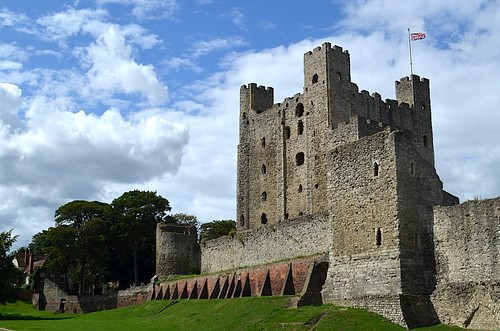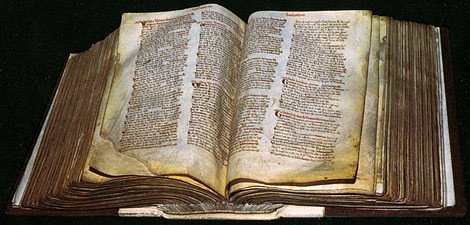
Help our mission to provide free history education to the world! Please donate and contribute to covering our server costs in 2024. With your support, millions of people learn about history entirely for free every month.
$ 13872 / $ 18000
was the system in 10th-13th century European medieval societies where a social hierarchy was established based on local administrative control and the distribution of land into units (fiefs). A landowner (lord) gave a fief, along with a promise of military and legal protection, in return for a payment of some kind from the person who received it (vassal).
The payment of the vassal to the lord typically came in the form of feudal service which could mean military service or the regular payment of produce or money. Both lord and vassal were freemen and the term feudalism is not generally applied to the relationship between the unfree peasantry (serfs or villeins) and the person of higher social rank on whose land they laboured.
AdvertisementAlthough the term 'feudalism' and 'feudal society' are commonly used in history texts, scholars have never agreed on precisely what those terms mean. The terms were applied to European medieval society from the 16th century onwards and subsequently to societies elsewhere, notably in the Zhou period of China (1046-256 BCE) and Edo period of Japan (1603-1868). The term feudalism was not used by the people who lived in the Middle Ages. Neither can the feudal system, once defined, be applied uniformly across different European states as there were variations in laws and customs in different geographical areas and in different centuries. As a consequence, many historians believe that the term feudalism is only of limited use in understanding medieval societies.
The Oxford English Dictionary has as concise a definition for feudalism as anywhere while still including its various levels of application:
AdvertisementThe dominant social system in medieval Europe, in which the nobility held lands from the Crown in exchange for military service, and vassals were in turn tenants of the nobles, while the peasants (villeins or serfs) were obliged to live on their lord's land and give him homage, labour, and a share of the produce, notionally in exchange for military protection.

The word 'feudalism' derives from the medieval Latin terms feudalis, meaning fee, and feodum, meaning fief. The fee signified the land given (the fief) as a payment for regular military service. The system had its roots in the Roman manorial system (in which workers were compensated with protection while living on large estates) and in the 8th century kingdom of the Franks where a king gave out land for life (benefice) to reward loyal nobles and receive service in return. The feudal system proper became widespread in Western Europe from the 11th century onwards, largely thanks to the Normans as their rulers carved up and dished out lands wherever their armies conquered.
The vassal received any income from the land, had authority over its inhabitants & could pass the same rights on to his heirs.
Starting from the top of society's pyramid, the monarch – a good example is William the Conqueror (r. 1066-1087) who considered all the lands of England as his personal property – could give a parcel of land (of no fixed size) to a noble who, in return, would be that monarch's vassal, that is he would promise loyalty and service when required. Thus, a personal bond was created. The most common and needed service was military service. Military obligations included fighting in that monarch's army or protecting assets of the Crown such as castles. In some cases, a money payment (known as scutage), which the monarch then used to pay mercenary soldiers, might be offered instead of military service. The vassal received any income from the land, had authority over its inhabitants and could pass the same rights on to his heirs.
AdvertisementThe nobles who had received land, often called suzerain vassals, could have much more than they either needed or could manage themselves and so they often sub-let parts of it to tenant vassals. Once again, the person was given the right to use and profit from this land and in return, in one form or another, then owed a service to the landowner. This service could again take the form of military service (typical in the case of a knight) or, as tenants might be of a lower social class (but still be freemen) and they might not have had the necessary military skills or equipment, more usually they offered a percentage of their revenue from the land they rented (either in money or produce) or, later in the Middle Ages, made a fixed payment of rent. There were also irregular special fees to be paid to the lord such as when his eldest daughter married or his son was knighted.

The arrangement which created a vassal was known as 'homage' as they often knelt before their particular feudal lord and swore an oath of loyalty, for which, in return, they not only received the land but also their lord's protection if and when required. The promise of protection was no small matter in times of war, when there were frequent raids from hostile neighbouring states, and when there was a perpetual danger of general banditry. Protection also came in the form of legal support and representation if a vassal found himself in a civil or church court. A tenant usually handed down their tenancy to their heir although it was sometimes possible to sell the right of tenancy to a third party, provided the lord who owned the land agreed.
Another type of relationship in feudal societies, especially in medieval Germany and France, involved the allod, an inalienable property, i.e. one that could not be taken back. Holders of an allod still owed some form of allegiance to a superior local lord but the relationship was not based on land ownership and so that allegiance was harder to enforce.
AdvertisementThe feudal system perpetuated itself as a status quo because the control of land required the ability to perform military service & land was required to fund military service.
The feudal system perpetuated itself as a status quo because the control of land required the ability to perform military service and, because of the costs involved (of weapons, armour and horses), land was required to fund military service. Thus there was a perpetual divide between the landed aristocracy (monarchs, lords, and some tenants) and those who worked the land for them who could be free or unfree labourers. Unfree labourers were serfs, also known as villeins, who were at the bottom of the social pyramid and who made up the vast majority of the population. The peasantry worked, without pay, on the land owned or rented by others to produce food for themselves and, just as importantly, food and profit for their masters. They were often treated as little more than slaves and could not leave the estate on which they lived and worked. The term feudalism, however, is generally applied by modern historians only to the relationship between lords and vassals, and not the peasantry. Rather, the relationship between serf and landowner or tenant is referred to as the manorial system after the most common unit of land, the 'manor'.

The consequence of the feudal system was the creation of very localised groups of communities which owed loyalty to a specific local lord who exercised absolute authority in his domain. As fiefs were often hereditary, a permanent class divide was established between those who had land and those who rented it. The system was often weighted in favour of the sovereign as when a noble died without an heir, his estate went back to the monarch to either keep for themselves or to redistribute to another noble. Monarchs could distribute land for political purposes, fragmenting a noble's holdings or distancing him from the court. It also became difficult to keep track of who owned what which led to such controls as Domesday Book of 1087.

Additional effects were the presence of vassals in the local courts which deliberated on cases involving the estates of their lords. Thus, there could be a clear conflict of interest and lack of impartiality, even if the more serious criminal cases were referred to the courts of the Crown.
AdvertisementIn addition, the system of feudal relationships could create serious unrest. Sometimes a monarch might insist on active military service because of a war but nobles might also refuse, as happened to King John of England in 1215 and the Barons' Revolt which led to the signing of the Magna Carta. In 1215, and in subsequent revolts in the 13th century, the barons were acting collectively for their own interests which was a direct threat to the entire system of feudalism, based as it was upon single lords and vassals working out their own private arrangements. Military service was reduced to fixed terms, typically 40 days in England, in an effort to reduce the burden on nobles so that they did not leave their lands unattended for too long. However, 40 days was not usually enough to see out a campaign and so a monarch was obliged to pay mercenaries, dealing another blow to the tradition of feudalism and vassalage.
Medieval feudalism was essentially based on the relationship of reciprocal aid between lord and vassal but as that system became more complex over time, so this relationship weakened. Lords came to own multiple estates and vassals could be tenants of various parcels of land so that loyalties became confused and even conflicting with people choosing to honour the relationship that suited their own needs best.
Another blow to the system came from sudden population declines caused by wars and plagues, particularly the Black Death (which peaked between 1347-1352), and by peasant revolts (most famously in England in 1381). Such crises caused a chronic shortage of labour and the abandonment of estates because there was no one to work them. The growth of large towns and cities also saw labour leave the countryside to find a better future and the new jobs available there.
By the 13th century, the increase in commerce and the greater use of coinage changed the way the feudal system worked. Money allowed feudal lords to pay their sovereign instead of performing military service; the monarch's use of mercenaries then meant military service, and thus the barons themselves became less important to the defence of the realm. Conversely, a monarch could now distribute money instead of land in his system of rewards. A rich merchant class developed with no ties of loyalty to anyone except their sovereign, their suppliers and their customers. Even serfs could sometimes buy their freedom and escape the circumstances into which they were born. All of these factors conspired to weaken the feudal system based on land ownership and service even if feudalism would continue beyond the medieval period in some forms and in some places.